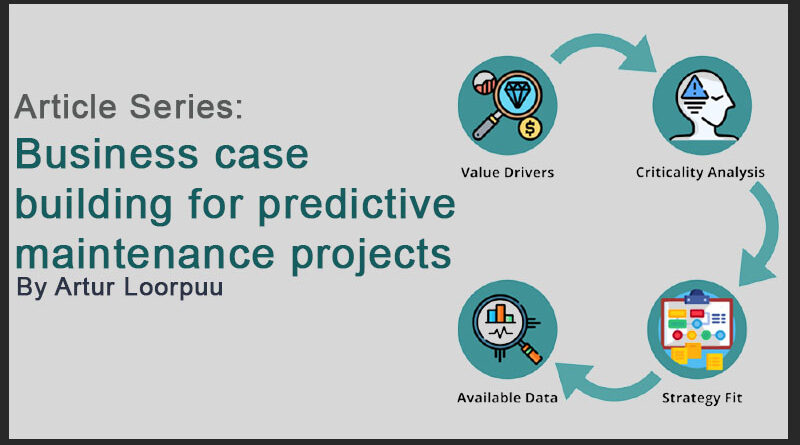How to make a solid business case for Predictive Maintenance by Artur Loorpuu
Organizations need to have a tangible benefit to adopt predictive maintenance. These benefits are determined in the concept phase.

What does the concept phase consist of? Simply put – this is when you investigate the business case. This article provides you with steps to follow in building a firm business case.
A firm business case is the key to implementing PdM. What is a business case in the first place? By definition a business case is an explanation or set of reasons describing how a business decision will improve a business, product, etc., and how it will affect costs and profits and attract investments. Having a clear idea on the return on investment (ROI) of predictive maintenance helps to convince the relevant project stakeholders who have the decision power. Benefits of predictive maintenance include:
- Avoiding unplanned downtime
- Improving production uptime
- Reducing maintenance costs
- Increasing staff productivity
- Reducing liabilities
- Improving product quality
Building a business case is both a financial and strategic task. Fully understanding how the decision to move towards PdM affects and improves the organization is critical. Below are some strategic, analytical steps and questions that can help you to determine how PdM can align with the value drivers that are important for your organization and reduce operational risk:
- Map out the value drivers for the organization – Understand why there is the need to implement predictive maintenance technology. Value drivers for PdM could be, for example, risk reduction, reduction of unplanned maintenance, uptime improvement of assets and production, reducing maintenance costs etcetera.
- Criticality analysis – What are the biggest risks? Which critical equipment causes bottlenecks and has the highest cost when in downtime? Having those process-critical systems with enough preventable downtime mapped out will already provide a good base for a solid business case.
- Strategy fit – Is implementing PdM completely necessary? Could you get by with just condition-based monitoring? Are you able to adapt processes to the insights from the data? It is important to understand how PdM strategically fits together with other maintenance strategies and how it supports operational processes – the organization needs to be able to act upon these insights logistically to provide real, tangible value.
- Check the available data – What data is available from the systems for that critical asset group? Do you have enough historical failure data? Is it possible to build predictive models based on that data?

Now that you have gone through the strategic questions and gained the understanding how predictive maintenance can help your organization, it is time to move forward to the business case calculations.







